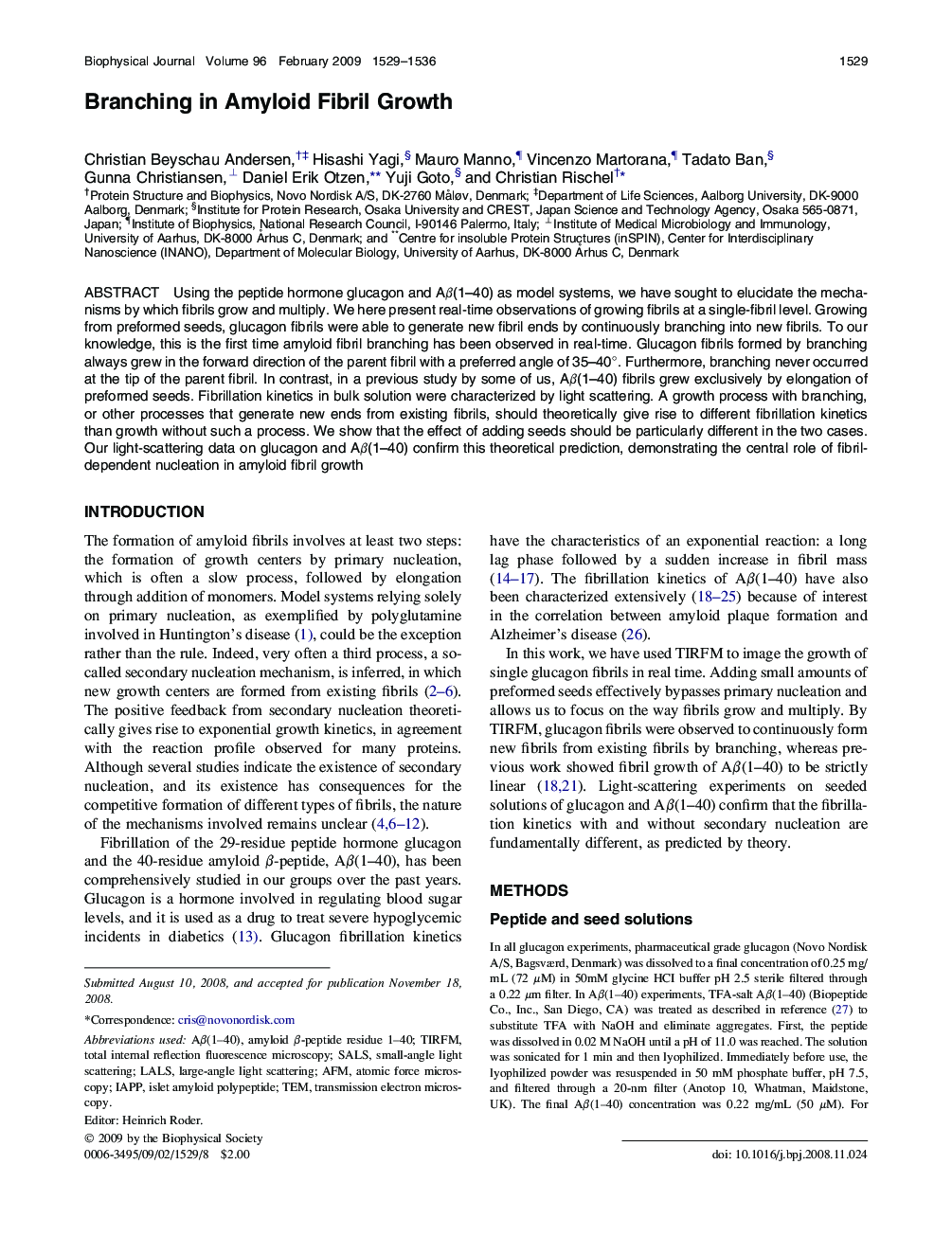| کد مقاله | کد نشریه | سال انتشار | مقاله انگلیسی | نسخه تمام متن |
|---|---|---|---|---|
| 1955804 | 1057837 | 2009 | 8 صفحه PDF | دانلود رایگان |

Using the peptide hormone glucagon and Aβ(1–40) as model systems, we have sought to elucidate the mechanisms by which fibrils grow and multiply. We here present real-time observations of growing fibrils at a single-fibril level. Growing from preformed seeds, glucagon fibrils were able to generate new fibril ends by continuously branching into new fibrils. To our knowledge, this is the first time amyloid fibril branching has been observed in real-time. Glucagon fibrils formed by branching always grew in the forward direction of the parent fibril with a preferred angle of 35–40°. Furthermore, branching never occurred at the tip of the parent fibril. In contrast, in a previous study by some of us, Aβ(1–40) fibrils grew exclusively by elongation of preformed seeds. Fibrillation kinetics in bulk solution were characterized by light scattering. A growth process with branching, or other processes that generate new ends from existing fibrils, should theoretically give rise to different fibrillation kinetics than growth without such a process. We show that the effect of adding seeds should be particularly different in the two cases. Our light-scattering data on glucagon and Aβ(1–40) confirm this theoretical prediction, demonstrating the central role of fibril-dependent nucleation in amyloid fibril growth
Journal: - Volume 96, Issue 4, 18 February 2009, Pages 1529–1536